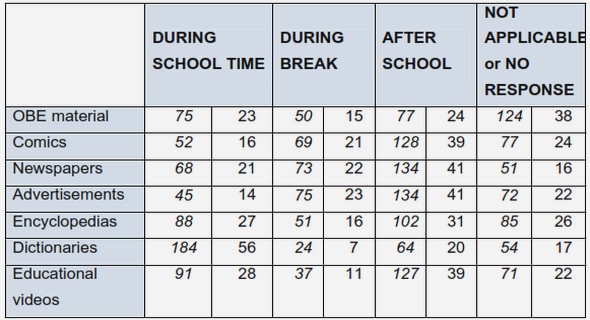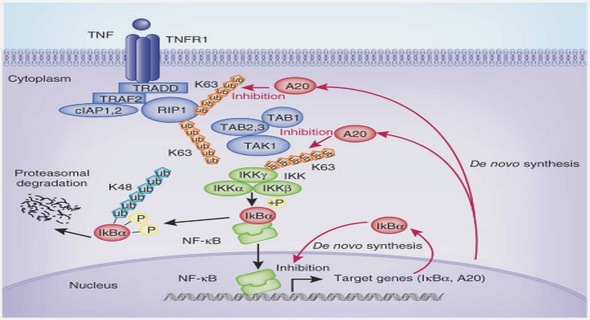Get Complete Project Material File(s) Now! »
Continental integration and human rights
The reluctance of African heads of state and government to add human rights to institutional agenda for integration dates back to the establishment of the OAU.
Although it was established as an organisation for political integration, the OAU was given a rather restrictive competence. One of the primary reasons behind the establishment of the OAU was to ‘furnish the mechanism for resolving African problems, by Africans in an African forum, free from outside influence and pressure’.263 This would essentially turn out to only involve problems that affected Africa’s relation with the world outside of the continent. However, the OAU also stood as a forum to bring political leaders of African states together to seek means of providing better lives for African peoples.264 This is where human rights ought to enter the discourse either as a ‘good’ in itself or as a tool for improving the lives of African peoples. However, integration under the OAU was expected to take place in an environment where African leaders jealously protected their then newly acquired sovereignty, which in turn meant that states insisted on being allowed to act as they pleased within national territories.265 Thus, even within the context of political integration, the realisation of human rights could not be taken for granted.
In pursuit of the preference for liberty to control the internal affairs of their various states, African leaders ensured that the OAU was established on the basis of recognition of their sovereignty. Hence, the guiding principles of the OAU at its inception included non-interference in the internal affairs of integrating states, respect for domestic sovereignty and the protection of boundaries created by the departed colonial powers.266 The effect of the policies of the OAU was that there were reports of African leaders oppressing their people with impunity.267 Other African leaders watched helplessly as violations of various forms occurred in neighbouring states.
Thus, the OAU became seen as ‘a club of Presidents engaged in a tacit policy of not inquiring into each other’s practices’.269 The only exception to these principles was in the collective resistance put up by the OAU against colonialism and apartheid. Considering the relevance of human rights for successful integration, the noninterventionist posture of the OAU may have contributed to the relative failure of that organisation. As some scholars have argued, some sort of symbiotic relationship exists between human rights and politics, enabling the citizenry to participate in and influence governmental decision-making.270 Respect for human rights is therefore seen as important for political stability and democratic governance.271 In the African context especially, internal peace and stability stand as vital ingredients for integration and these can only be achieved in the face of respect for the rule of law and the protection of human rights.272 The consequences of a lack of respect for human rights which include internal challenges to governmental legitimacy and the potential of conflict with neighbouring states do not provide the right environment for integration.273 The shortcomings of the OAU constitutive instruments in the field of human rights reflect the challenges that African integrative initiatives face in proceeding without the inclusion of human rights in their agendas.
Similar to what is currently the practice in the RECs, there was some reference to human rights in the Preamble and in article 2(1)(e) of the OAU Charter. However, that reference could be described as merely a record of adherence to the principles of the UN Charter and the Universal Declaration of Human Rights (UDHR) and an indication of the OAU’s compatibility with the spirit of the UN rather than actual commitment to undertake binding obligations of human rights.274 Accordingly, despite the proclamation of adherence in line with the global Charter, Africa did not record the level of progress in human rights protection that was achieved by the UN.
The OAU also did not show the type of commitment in the area of human rights as it did in the areas of decolonisation, self-determination and national liberation.275 Even where the OAU showed some interest in the protection of human rights in pursuit of preambular commitments, the structure of the organisation restricted it to a mostly advisory role, with an attendant impotency of action.276 However, by the end of 1969, the OAU took its first tentative step towards the protection of human rights with the adoption of a convention to regulate refugee issues in the continent.277 Thus, up till the 1970s, human rights remained a peripheral issue in the agenda of integration discourse in Africa. This represents grounds to contend that human rights realisation was almost an afterthought in the continental integration process. Some have argued that part of the reason why human rights did not feature prominently in African integration discourse was the resistance exhibited by the UN to the decentralisation of human rights protection. Thus, the view was expressed that the ‘UN initially believed that regional approaches to human rights might detract from the perceived universality of human rights’.278 This perception was shattered with the successful evolution of regional human rights systems in Europe and the Americas with feelings emerging that the regional systems of human rights protection could be more effective than the global human rights system.279 Hence, for a variety of reasons including the perceived resistance of the UN and reliance of African states on the principle of domestic jurisdiction, human rights did not find a place in the constitutive instrument of the main integration initiative in Africa.
Regional integration and human rights
As previously noted, integration at the subregions in Africa was mostly for economic purposes. Accordingly, the founding instruments of the initial regional integration initiatives had little or no reference to human rights protection. In effect, the trend of African heads of state engaging in violating human rights with impunity continued without interference at the regional or subregional level as it was at the continental level. Not surprisingly, the difficulties that this posed for continental integration were duplicated at this regional level. Political instability arising from resistance to illegitimate and high handed governments hampered the integration process just as much as it severely affected economic growth and development in the respective states.298 Increasingly, states were forced to pay greater attention to managing internal threats to political power, resorting to policies that promised short term relief from the pressures that resulted from the lack of respect for human rights. Consequently, it was realised that strict adherence to the economic objectives of integration without addressing the challenges that arose from the internal political environment of the integrating states and the collective political environment of the region, did not augur well for the successful pursuit of integration. Thus, it can be argued that the difficulties (and in some cases failures) of regional integration initiatives could be the frustration that provided the need for the use of the spillover theory to introduce human rights in the various subregional integration schemes. This comes out in the sense that as against the original constitutive instruments of the various RECs, recognition and respect for human rights now appears institutional principles in the new constitutive treaties of almost all the RECs currently existing in the continent.
Another factor that may explain the inclusion of human rights in the institutional agenda of African RECs is the growing connection between the RECs and the institution for continental integration. As previously noted, one of the high points of the AEC Treaty was the recognition of RECs as the building blocks for continental economic integration. This was further extended to make the RECs building blocks for other aspects of continental integration and thus amplified the need to ensure stability of the RECs through the creation of conditions for political stability in the converging states.300 The link created by the recognition of the RECs as building blocks of the AU and the AEC may be stretched to mean that the RECs needed to align themselves with the principles upon which the continental organisations are based. Consequently, RECs that were founded or re-established after 1991 have included the principle of recognition and respect for human rights. From another perspective, the fact that members of the various RECs are also members of the OAU facilitated the introduction of principles that required respect for the OAU-based African Charter. Essentially, this gives room for the RECs to also be positioned as the ‘building blocks’ for implementation of the African Charter. It is difficult to hinge this motivation on any of the theoretical explanations linked to the theory of spillover.
Chapter one Introduction
1.1 Background to the study
1.2 Thesis statement and research questions
1.3 Clarification of terminology
1.4 Significance of the study
1.5 Research methodology
1.6 Breakdown of chapters
1.7 Limitations and temporal delineation of the study
Chapter two Human rights and international integration in Africa
2.1 Introduction
2.2 States, sovereignty and international organisations
2.3 History of African integration
2.4 Human rights in continental integration initiatives in Africa
2.5 Subregional institutions as foundational blocks for integration in Africa
2.6 Conceptualising the link between political and economic integration in Africa
2.7 Human rights in the discourse of institutions for integration in Africa
2.8 The African human rights system: whither subregional mechanisms?
2.9 Interim Conclusion
Chapter three ECOWAS: A new vehicle for human rights realization in West Africa?
3.1 Introduction
3.2 Towards integration in West African
3.3 The idea of human rights in ECOWAS
3.4 The sources of rights in the ECOWAS framework
3.5 Human rights in the mandates of the main institutions and organs of ECOWAS
3.6 ECOWAS as a post-national human rights institution
3.7 A new pillar in an old building: Relation with existing human rights systems
3.8 Interim conclusion
Chapter four Current ECOWAS human rights practice: the conundrum of efficacy and symmetry
4.1 Introduction
4.2 The Authority: Beyond the conferences
4.3 A mandate without a method? The Community parliament
4.4 A licence to protect: The Community Court of Justice
4.5 The Commission: more than a secretariat
4.6 The Council of Ministers
4.7 Other institutions in the system
4.8 Interim conclusion
Chapter five Insights from beyond the continent: Human rights in the European Union
5.1 Introduction
5.2 The European Union in context
5.3 The evolution of human rights in the EU Constitutional framework: activism or illegality?
5.4 Current human rights practice: addressing issues of overlap and organisational conflicts
5.5 Mechanisms for maintaining intra- and inter-organisational balance in human rights practice
5.6 Similarities, dissimilarities and insights
5.7 Interim conclusion
Chapter six Comparative perspectives in Africa: Human rights in the EAC and SADC
6.1 Introduction
6.2 Human rights in the East Africa Community
6.3 Human rights in the Southern Africa Development Community
6.4 Towards non-disruptive subregional systems
6.5 Interim conclusion
Chapter seven Conclusion and recommendations
7.1 Introduction
7.2 Synopsis of findings
7.3 Conclusions
7.4 An ideal model for subregional human rights regimes in Africa
7.5 Recommendations
Bibliography


